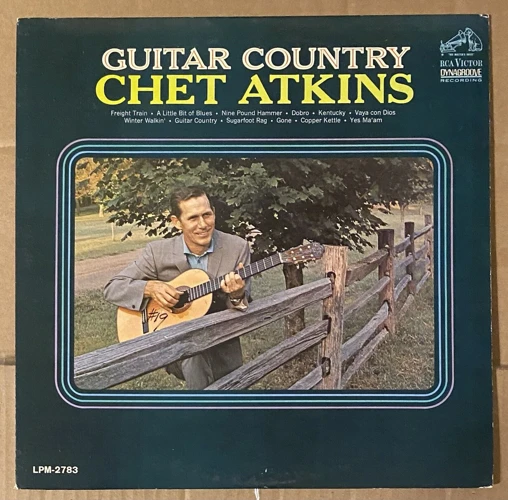Chet Atkins, known as “Mr. Guitar,” was a legendary country guitarist whose innovative style and virtuoso technique revolutionized the sound of country music. With a career spanning over six decades, Atkins left an indelible mark on the genre and inspired countless musicians with his unique blend of country, jazz, and pop influences.
Early Life and Influences
Chet Atkins was born in 1924 in rural Luttrell, Tennessee. Growing up in a musical family, Atkins was exposed to various styles of music from a young age. He was particularly influenced by the blues and country music that he heard on the radio and at local gatherings. Atkins began playing the guitar at an early age and quickly developed a prodigious talent for the instrument.
Rise to Fame
Atkins’ big break came in 1942 when he joined the Grand Ole Opry as a sideman. His impeccable guitar playing and innovative approach to the instrument quickly caught the attention of the country music world, and Atkins soon found himself in high demand as a session musician and producer. In the 1950s, he signed with RCA Records and began releasing his own solo albums, showcasing his unique blend of country, jazz, and pop influences.
Signature Style
Chet Atkins’ signature style was characterized by his fingerpicking technique, which allowed him to play melody, harmony, and rhythm simultaneously on the guitar. He was known for his smooth, melodic playing and his ability to seamlessly blend genres to create a sound that was uniquely his own. Atkins was also a pioneer in the use of studio effects and multi-tracking, which allowed him to create lush, layered arrangements on his recordings.
Career Achievements
Over the course of his career, Chet Atkins received numerous accolades and awards for his contributions to music. He was a member of the Country Music Hall of Fame and the Rock and Roll Hall of Fame, and he won multiple Grammy Awards for his recordings. Atkins also had a successful career as a producer, working with artists such as Elvis Presley, Dolly Parton, and The Everly Brothers.
Legacy
Chet Atkins’ influence can be heard in the playing of countless guitarists across a wide range of genres. His innovative approach to the instrument and his willingness to push the boundaries of traditional country music paved the way for future generations of musicians to explore new sounds and styles. Atkins’ legacy as a guitarist, producer, and musical innovator continues to inspire and influence musicians to this day.
Final Thoughts
Chet Atkins was a true pioneer and visionary whose impact on country music cannot be overstated. His innovative playing style and genre-defying approach to music helped shape the sound of country music for generations to come. As we look back on his remarkable career, we can see the lasting influence that Chet Atkins has had on the world of music, and we can appreciate the incredible talent and artistry that he brought to his craft.
Looking to explore more about legendary country guitarists? Check out our articles on Chet Atkins, Jerry Reed, Buddy Emmons, Tommy Emmanuel, and Doc Watson to dive deeper into the world of country guitar music!
Conclusion
In conclusion, Chet Atkins was a trailblazing guitarist whose contributions to country music continue to resonate to this day. His innovative playing style, genre-defying approach, and virtuosic technique set him apart as one of the true legends of the guitar. Chet Atkins’ legacy lives on in the music of the countless artists he influenced, and his impact on the world of music will be felt for generations to come.


